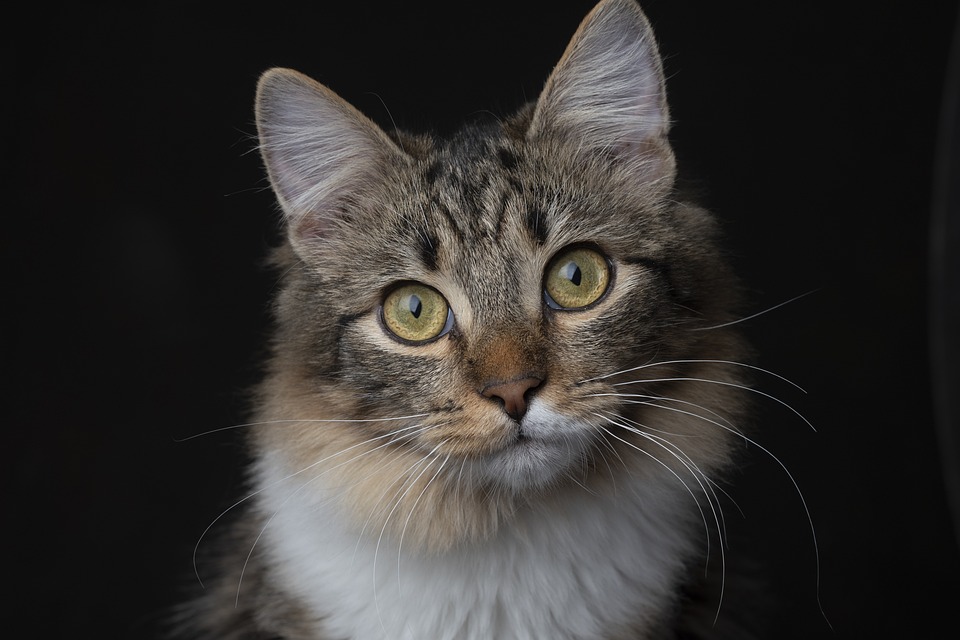
Understanding Cat Dominance Behavior: A Guide to Raising Well-Behaved Felines
Cats are fascinating creatures with unique personalities and behaviors. As a cat owner, understanding feline dominance behavior is crucial in raising a well-behaved and harmonious pet. Dominance in cats is often misunderstood, but by recognizing the signs and implementing effective strategies, you can ensure a peaceful coexistence between your feline friend and other pets or humans in the household.
Recognizing Dominance Behavior in Cats
Dominance in cats can manifest in various ways, often as a result of natural instincts or environmental factors. Here are some common signs of dominance behavior in cats:
- Resource Guarding: Cats may exhibit dominance by protecting their food, toys, or favorite resting spots from other animals or humans.
- Staring or Intimidating: A dominant cat may stare intently at another cat or person to assert control.
- Blocking Pathways: Your cat might block doorways or pathways, preventing others from passing.
- Over-grooming: Excessive grooming of another cat can be a sign of dominance, as it mimics parental behavior.
- Physical Aggression: Swatting, biting, or hissing can be dominance behaviors, especially if they occur during interactions with other cats or humans.
Factors Influencing Dominance Behavior
Several factors can contribute to dominance behavior in cats, including:
- Genetics: Some breeds are more prone to dominant behaviors due to their genetic makeup.
- Socialization: Poor socialization during the critical early weeks of a kitten’s life can lead to dominance issues.
- Environment: A lack of resources, such as food, space, or attention, can trigger dominance as cats compete for these necessities.
- Health Issues: Pain or discomfort from medical conditions can cause behavioral changes, including increased aggression or dominance.
Strategies to Manage and Modify Dominance Behavior
Addressing dominance behavior in cats requires a combination of understanding, patience, and effective training techniques. Here are some actionable strategies to help:
1. Provide Ample Resources
Ensure that your cat has access to enough food, water, litter boxes, toys, and resting spots. This reduces the need to compete for resources and minimizes dominance behavior.
2. Implement Positive Reinforcement
Use positive reinforcement techniques to encourage desirable behaviors. Reward your cat with treats, praise, or affection when they exhibit calm and cooperative behavior.
3. Establish a Routine
Cats thrive on routine. Establishing a consistent schedule for feeding, playtime, and rest can help reduce anxiety and dominance behavior.
4. Encourage Socialization
Expose your cat to different environments, people, and animals to enhance their social skills. Gradual exposure helps reduce fear and dominance tendencies.
5. Use Deterrents
If your cat displays dominance by blocking pathways or intimidating other pets, use deterrents like a gentle squirt of water or a loud noise to discourage the behavior.
6. Consult a Veterinarian
If dominance behavior persists, consult a veterinarian to rule out any underlying medical issues. Pain or illness can contribute to behavioral changes.
7. Seek Professional Help
If you’re struggling to manage your cat’s dominance behavior, consider seeking help from a professional animal behaviorist or trainer. They can provide tailored advice and training plans.
Building a Positive Relationship with Your Cat
Developing a positive relationship with your cat is essential for managing dominance behavior. Here are some tips to strengthen your bond:
1. Spend Quality Time
Dedicate time each day to interact with your cat through play or gentle petting. This helps build trust and reinforces your role as a positive presence in their life.
2. Understand Body Language
Learn to read your cat’s body language to better understand their emotions and needs. Recognizing signs of stress or discomfort allows you to address issues before they escalate.
3. Offer Mental Stimulation
Provide toys, puzzles, and activities that challenge your cat’s mind. Mental stimulation reduces boredom and can prevent dominance behaviors caused by frustration.
4. Respect Their Space
Cats value their personal space. Allow your cat to retreat to a quiet and safe area when they need alone time, which can help reduce stress and dominance tendencies.
Creating a Harmonious Multi-Cat Household
If you have multiple cats, it’s important to manage their interactions to prevent dominance conflicts. Here are some strategies for maintaining a peaceful multi-cat household:
1. Gradual Introductions
When introducing a new cat to your household, do so gradually. Allow the cats to become familiar with each other’s scents before face-to-face meetings.
2. Set Up Multiple Resources
Ensure that each cat has access to their own food and water bowls, litter boxes, and resting areas. This minimizes competition and reduces dominance behavior.
3. Monitor Interactions
Supervise interactions between cats, especially during the initial introduction period. Intervene if you notice signs of aggression or stress.
4. Use Feliway Diffusers
Consider using Feliway diffusers, which release synthetic pheromones to promote calmness and reduce tension among cats.
Conclusion
Understanding and managing dominance behavior in cats is essential for creating a harmonious household. By recognizing the signs, implementing effective strategies, and building a positive relationship with your feline companion, you can ensure a well-behaved and content pet. Remember, patience and consistency are key, and don’t hesitate to seek professional help if needed. With the right approach, you can enjoy a happy and peaceful life with your beloved cat.
#ChatGPT assisted in the creation of this article.








